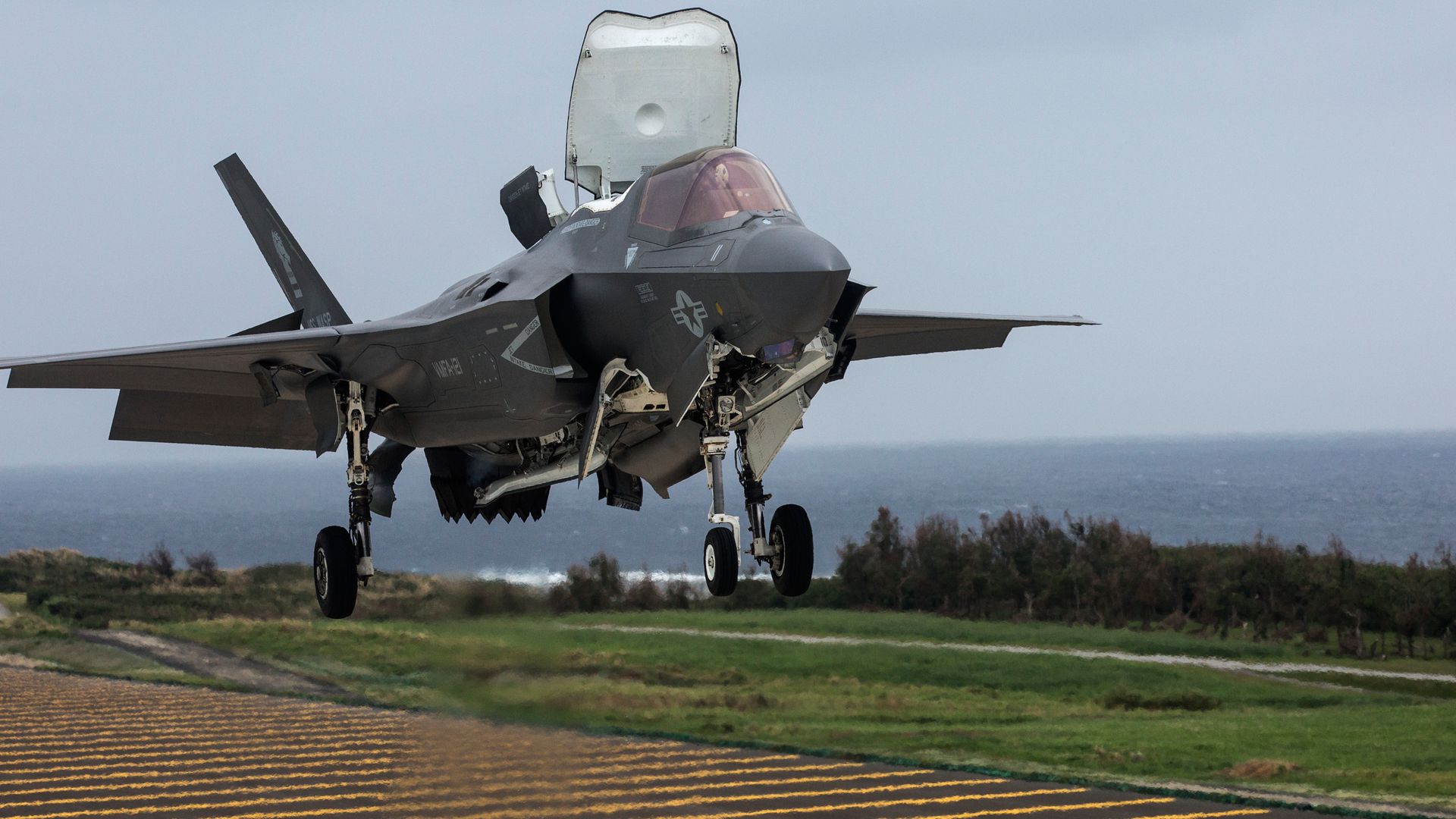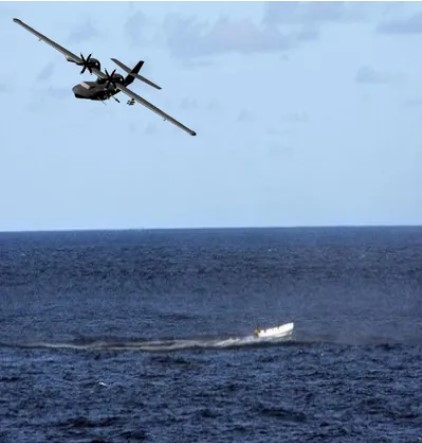
WHETHER ITS FIGHTING CHINA IN THE PACIFIC OR RUSSIA IN THE BALTICS, THE U.S. AND ITS ALLIES ARE LOOKING FOR WAYS TO WIN WARS WITHOUT RUNWAYS. AIR BASES ARE OBVIOUS TARGETS, AND AIRCRAFT CARRIERS CAN BE SUNK, BUT PLANES WILL STILL NEED TO FLY IF THE U.S. WANTS TO HAVE A CHANCE AT VICTORY.
THE U.S. MARINE CORPS HOLDS TRAINING EVENTS IN CALIFORNIA WITH THIS MISSION IN MIND. AT THIS YEAR’S OBSIDIAN ICEBERG DRILL, THE MARINES FIELDED NINE SQUADRONS AND HOSTED UNITS FROM THE AIR FORCE AND NAVY TO PRACTICE OPERATING FROM REMOTE LOCATIONS. IT’S A CONCEPT KNOWN AS DISTRIBUTED OPERATIONS.
THE MARINE CORPS’ F-35B FEATURES A SHORT TAKE OFF AND VERTICAL LANDING ABILITY. IT STILL NEEDS ROOM TO TAKE OFF, BUT NOT AS MUCH AS OTHER FIGHTER JETS. IT’S WHY THIS F-35B WAS ABLE TO LAND, REFUEL, REARM, AND THEN TOOK OFF AGAIN FROM AN OLD STRETCH OF THE PACIFIC COAST HIGHWAY
THE BRITISH ROYAL AIR FORCE IS ALSO LANDING ITS F-35Bs ON REMOTE HIGHWAYS, ALONG WITH SOME RAF TYPHOONS. THE BRITS ARE ALSO SCHEDULING TRAINING DRILLS WITH NEW NATO ALLY FINLAND TO FURTHER DEVELOP THE ABILITY. THE FINS HAVE BEEN PERFECTING THE ART OF HIGHWAY LANDINGS SINCE THE COLD WAR.
IN THE EVENT OF AN ARMED CONFLICT, AIR BASES ARE USUALLY SOME OF THE FIRST SITES TO BE TARGETED. A GOOD PORTION OF U.S. AND NATO WARFIGHTING DOCTRINE DEPENDS ON THE ABILITY TO ESTABLISH AIR SUPERIORITY, THOUGH, SO REDUNDANCIES ARE NEEDED TO KEEP ALLIED PLANES IN THE AIR.
TYPICALLY, MILITARY RUNWAYS AND CARRIER DECKS ARE CAREFULLY MANAGED TO MAINTAIN PRISTINE CONDITIONS. BUT WAR IS HELL AND PRISTINE CONDITIONS COULD BE IN SHORT SUPPLY. EVEN THOUGH THE U.S MILITARY AND OTHERS DRILL ON RAPID RUNWAY REPAIR, IF THE BOMBS ARE BIG ENOUGH, NO AMOUNT OF PATCHWORK WILL HELP. SO, WHILE SMALLER FIGHTER JETS LIKE F-35Bs CAN LAND ON HIGHWAYS, LARGER CARGO PLANES MAY NEED MORE SPACE.
THERE ARE SEVERAL PROJECTS IN THE WORKS FOR THE U.S. MILITARY TO MEET THIS NEED. THE AIR FORCE SPECIAL OPERATIONS COMMAND IS TESTING A CONCEPT OF ATTACHING REMOVABLE FLOATS TO A MODIFIED C-130 CARGO PLANE. THE AIR FORCE SAYS IT’S A COST-EFFECTIVE CONCEPT TO ACHIEVE RUNWAY INDEPENDENCE.
THE DEFENSE ADVANCED RESEARCH PROJECTS AGENCY IS ALSO DEVELOPING CONCEPTS THROUGH IT’S LIBERTY LIFTER PROGRAM. DARPA AWARDED TWO CONTRACTS TO DEVELOP A PLANE THAT CAN LIFT-OFF AND LAND ON MILD SEAS, OPERATE ON SURFACE WAVES UP TO SIX FEET, FLY FOR EXTENDED PERIODS CLOSE TO WATER BUT ALSO BE ABLE TO CLIMB TO AN ALTITUDE OF 10,000 FEET.
THE CONCEPTS FOR THE LIBERTY LIFTER PROGRAM ARE DEFINITELY EYE-CATCHING, BUT IT WILL BE SOME TIME BEFORE EITHER SEES REAL-WORLD TESTING.
INSTEAD OF DESIGNING NEW, ONE FLORIDA-BASED COMPANY IS LOOKING TO BUILD ON PAST DESIGNS TO MEET MODERN NEEDS. CATALINA AIRCRAFT RECENTLY ANNOUNCED ITS NEXT GENERATION AMPHIBIOUS AIRCRAFT CATALINA II. THE COMPANY SAYS THE REDESIGNED SEAPLANE WILL MEET ALL THE AIRBORNE AMPHIBIOUS OPERATIONS REQUIRED BY THE U.S. MILITARY.
THE PBY 5 CATALINA WAS ICONIC DURING WORLD WAR II. IT COULD PROVIDE MARITIME PATROL, TRANSPORT SUPPLIES AND SOLDIERS, AND OF COURSE PERFORM SEARCH AND RESCUE MISSIONS.
CATALINA AIRCRAFT SAYS ITS MODERN TURBOPROP FLYING BOAT WON’T NEED WIDE-OPEN WATER TO OPERATE. IT WILL ALSO BE ABLE TO TAKE OFF AND LAND ON GRASS, DIRT, SAND, LAKES, RIVERS, BAYS AND IRONICALLY, EVEN RUNWAYS IF IT NEEDS TO.
IF YOU WANT MORE UNBIASED, STRAIGHT FACT REPORTING ABOUT MILITARY MATTERS AND OTHER PROJECTS IN DEVELOPMENT, YOU CAN HEAD OVER TO SAN. COM, OR DOWNLOAD THE STRAIGHT ARROW NEWS APP.











